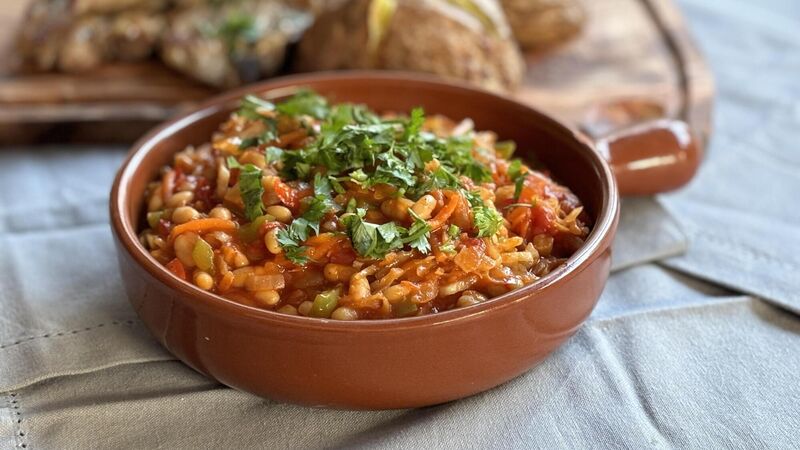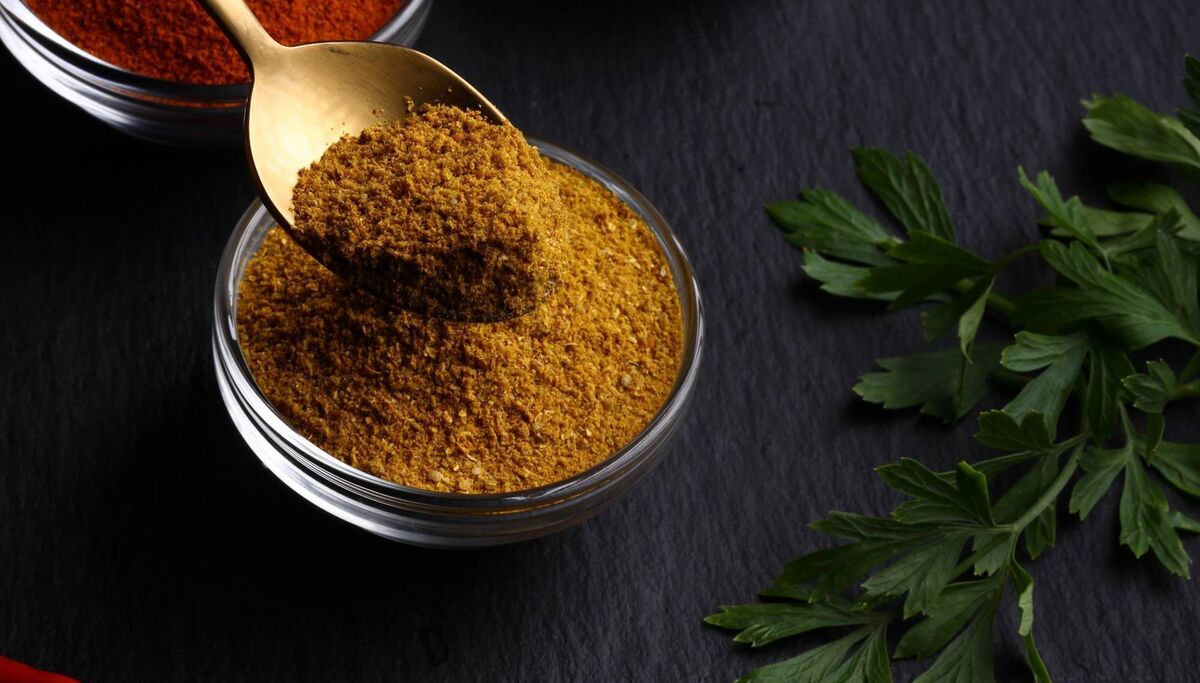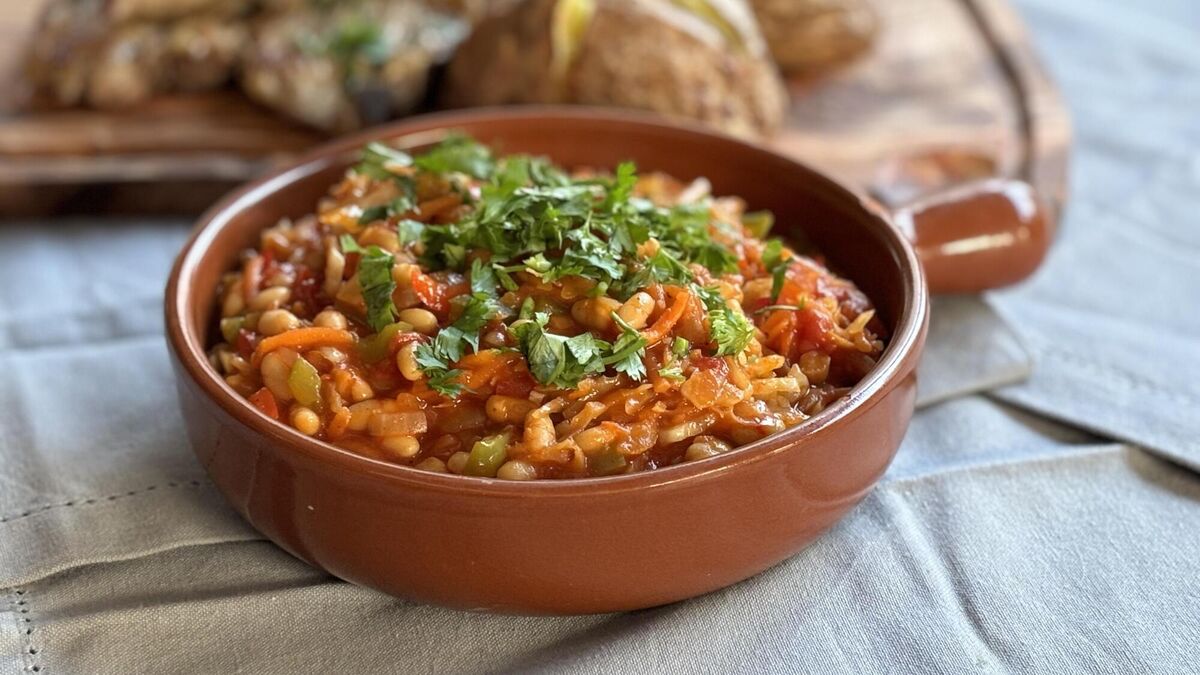How to make Colm O'Gorman's chakalaka — a bright and colourful South African relish

Chakalaka is a South African relish or side dish made with vegetables, flavoured with fresh ginger and garlic and spiced with a masala or curry powder.
Chakalaka is a South African relish or side dish made with vegetables, flavoured with fresh ginger and garlic and spiced with a masala or curry powder. The name alone makes me smile, it is just so musical and intriguing, and the dish lives up to that promise – it is bright and colourful and full of flavour.
All the ingredients for this recipe are readily available locally. One perhaps surprising ingredient is baked beans.
The beans add some protein to the dish, and a lovely bit of sweetness. They are very much in keeping with the reported origins of the dish, where mineworkers in Johannesburg cooked tinned vegetables with chilli to make a relish to eat with pap, a thick maize-based porridge.

I have included a recipe to make an authentic Durban masala spice blend which is perfect for this recipe. It is very easy to throw together and is well worth the little extra effort.
In my opinion, nothing beats the flavour of freshly toasted spices, but if you want to skip making it to save a little time, you can just use a mild curry powder instead.
Chakalaka is often eaten as a side dish or relish at a braai, a South African barbecue. It can be eaten warm or cold and is fabulous with grilled meats.
I love it with some barbecued lamb and baked jacket potatoes, but it works beautifully with any grilled protein. It also makes a lovely vegan main course, served over baked potatoes or potato skins.
As with many spiced dishes or relishes, it tastes even better the day after you make it once the flavours have had a little time to fully develop, so it is a great dish to prepare in advance if you are having a gang over for a barbecue.
If you have any leftovers, it stores well in the fridge for five to six days and warms up easily.
I have used leftovers to make a lovely brunch dish, a version of shakshuka which I insist on calling shakachakalaka! Simply warm the chakalaka in a big frying pan, and when it starts to bubble, use a spoon or ladle to make little wells in the sauce and crack an egg into each one. Pop on a lid and simmer the pan until the eggs are cooked. Serve with toasted pitta or sourdough and some Greek yoghurt.
Chakalaka
The name alone makes me smile, it is just so musical and intriguing, and the dish lives up to that promise – it is bright and colourful and full of flavour.

Servings
6Preparation Time
20 minsCooking Time
15 minsTotal Time
35 minsCourse
SideIngredients
2 tbsp olive oil
1 onion
3 cloves garlic
2-3cm fresh ginger root
1 red chilli
1 red pepper
1 green pepper
250g carrots
250g white cabbage
2 tbsp tomato puree
2 tsp Durban masala (see below) or curry powder
1 tin chopped tomatoes
A few springs of resh thyme
2 tins baked beans
Salt and pepper to taste
Juice of half a lemon
Small handful fresh coriander
Method
Peel and finely chop the onion. Peel and grate the garlic and the ginger. Finely chop the red chilli, discarding the seeds and pith first if you want a milder spiced chakalaka. Wash, trim, deseed and finely chop the red and green peppers. Wash and grate the carrots using the coarsest edge on a box grater or food processor. Finely shred the white cabbage.
Heat the olive oil over high heat in a large pan. When the oil begins to shimmer, reduce the heat to medium and add the chopped onion. Fry for three to four minutes until the onion begins to soften. Add the grated garlic and ginger and the chopped red chilli. Stir fry for another few minutes, then stir in two teaspoons of Durban masala or mild curry powder.
Next, add the diced red and green peppers and the tomato puree. Stir to combine everything and cook for two to three minutes. Add the chopped tomatoes and stir those in. Season with some flaky sea salt and freshly ground black pepper.
Add the grated carrot, the shredded white cabbage, and the leaves from a few sprigs of thyme, about a teaspoon full is perfect. Stir to coat the vegetables in the sauce and bring back to a simmer. Cover the pan with a lid and let the pot simmer away for five minutes.
After five minutes, add two tins of baked beans and the juice of half a lemon. Cook for another few minutes, taste and adjust the seasoning if required.
Roughly chop the coriander and stir half into the chakalaka. Serve in a big warm bowl with the rest of the chopped coriander scattered over the top.
Durban Masala
An authentic Durban masala spice blend... very easy to throw together and is well worth the little extra effort. In my opinion, nothing beats the flavour of freshly toasted spices...

Course
InputIngredients
1 tsp coriander seeds
1 tsp cumin seed
5 cardamom pods
½ tsp fenugreek seed
6 whole cloves
1 bay leaf
2 tbsp mild chilli powder
1 tsp cayenne pepper
1 tsp ground cinnamon
½ tsp ground ginger
Method
Remove the seeds from the cardamon pods and pop them into a dry pan along with coriander, cumin, fenugreek, cloves and the bay leaf. Heat the pan over a medium heat until the spices are toasted and fragrant. Keep an eye on them so that they do not burn, giving them a toss now and again to ensure they toast evenly. Once they are ready, remove them from the heat and allow them to cool. Once cooled, grind them to a powder using a mortar and pestle or a spice grinder.
Pop the ground spices into a clean jar along with the rest of the ingredients. Pop the lid on the jar and shake to combine thoroughly. This spice blend will store for several months in a cool dark place. It is perfect for this chakalaka recipe, or in other South African curry recipes.








